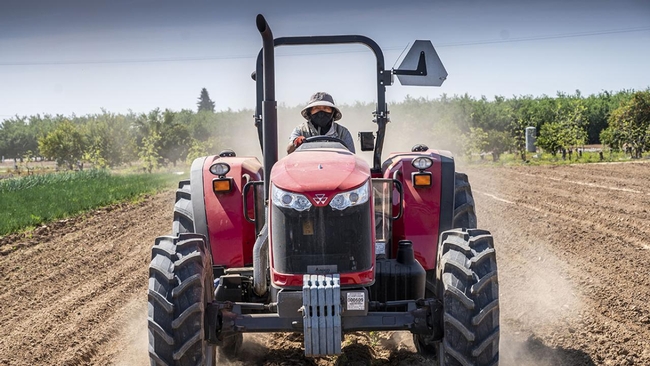NIOSH renews funding for Western Center for Agricultural Health and Safety
For more than three decades, the Western Center for Agricultural Health and Safety at UC Davis has been dedicated to the understanding and prevention of illness and injury in western agriculture.
WCAHS is pleased to announce the center has received funding from the National Institute of Occupational Safety and Health (NIOSH) for the next five years. The center is one of 12 agricultural health and safety centers in the United States to receive funding this year. It was also one of the first two centers established by NIOSH in 1991.
Agriculture continues to pose hazardous risks to farmworkers in the U.S. based on occupational fatality rates. In the U.S., roughly 11% of agricultural fatalities and 42.6% of injuries occur in the western region (Arizona, California, Hawai'i and Nevada). Western agriculture is one of the nation's most intensive and productive and employs up to 1 million farmworkers.
Agriculture in California is characterized by labor-intensive specialty crops (e.g., berries, table grapes, melons), which require pruning, weeding, harvesting and packaging by hand rather than with machines. In addition to repetitive stress and musculoskeletal injuries, and machinery-related accidents and falls, workers may experience exposure to hazards such as heat, wildfire smoke, pesticides and zoonotic pathogens.
“Western agriculture feeds the nation by producing more than 400 commodities with one-third of all U.S. vegetables and two-thirds of U.S. fruits and nuts,” said Kent Pinkerton, director of WCAHS and professor of pediatrics in the School of Medicine. “The unique nature of diverse specialty crops requires greater human labor, which leads to an increased risk in farm-related injuries, along with the growing mechanization of farming practices, especially in California.”
WCAHS is part of the Institute of the Environment, one of the Organized Research Units within the Office of Research.
Research projects in the new funding cycle
A portion of the NIOSH grant will fund research projects over the five-year cycle with the aim of finding practical solutions to lower health and safety risks. Kent Pinkerton will continue to study the impacts of agricultural and wildfire emissions on California farmworker health. Director of Outreach Christopher Simmons, a professor and the chair in the Department of Food Science and Technology in the College of Agricultural and Environmental Sciences, will continue his research on biosolarization as an alternative to soil fumigation.
Farzaneh Khorsandi, an assistant professor of Cooperative Extension in the Department of Biological and Agricultural Engineering joins the center both as a principal investigator and the project lead for the agricultural all-terrain vehicle (ATV) safety research project. She will also lead the pilot/feasibility program, which provides seed funding and mentorship for early-stage investigators on safety and health issues in western agriculture.
Timothy Beatty, a professor in the Department of Agricultural and Resource Economics in the College of Agricultural and Environmental Sciences, will join the center as a principal investigator studying surveillance of occupational health and injuries in the western region to develop novel machine learning approaches to categorize injury data by cropping system and work.
Fadi Fathallah, a professor and department chair in the Department of Biological and Agricultural Engineering, will continue in his role as associate director of WCAHS and as a project investigator on Beatty and Khorsandi's projects.
Upcoming outreach and training projects
The grant renewal will also enable WCAHS to expand outreach activities into Arizona, Hawai'i and Nevada as well as to further develop safety guides for Southeast Asian farmers and tailored print and video resources in English, Spanish, Hmong, Punjabi and Indigenous languages (including Mixteco, Zaptoteco and Triqui). In-person and remote trainings on numerous topics, including heat illness prevention, injury and illness prevention and wildfire smoke exposure will also continue to be offered by the center.

